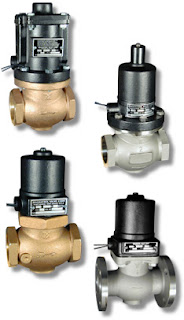The ASCO series 212 composite valve is intended for use in applications for water purification and water treatment, especially in the implementation of the membrane-based filtration. The composite valve series 212 is perfect for use in mid-size Reverse Osmosis Systems apps requiring lead-free and NSF-approved construction. The series 212 composite valves are available in 3/8", 1/2", 3/4", and 1" pipe sizes rated for pressures up to 150 PSIG and 180 degrees F.
The video above demonstrates how to install the series 212 using the patented ASCO FasN system for NPT threaded connections, turn and lock connections, and solvent bond connections.
For more information, contact Miller Energy Inc. by calling 800-631-5454 or visit their web site at https://millerenergy.com.




